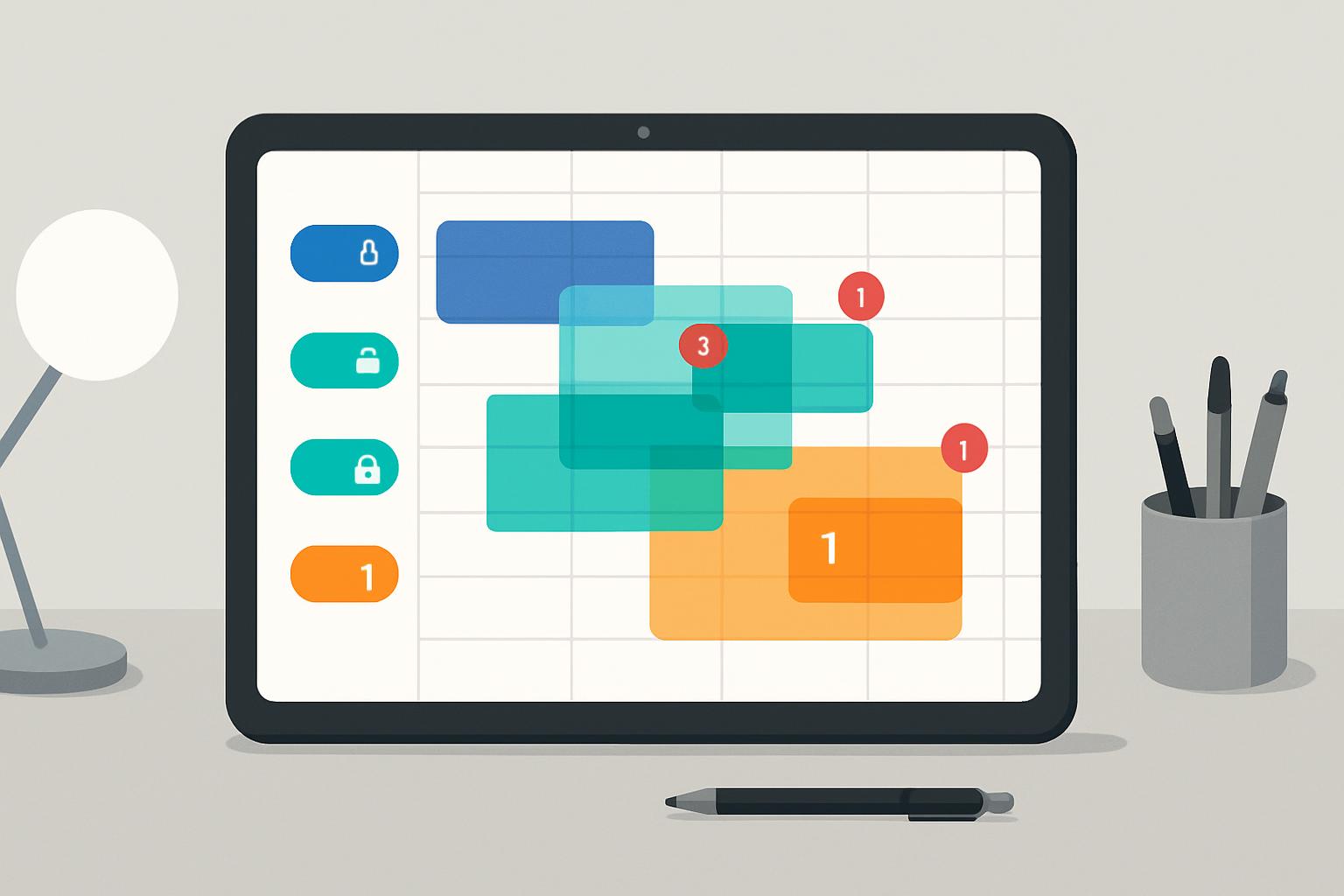Layered Calendar Architecture: Personal, Business & Side-Gig
Layered Calendar Architecture: Managing Personal, Primary Business, and Side-Gig Schedules on One Device - reduce double-bookings 70% and save 4-6 hrs/wk

Introduction
Business professionals increasingly carry one always-on device that contains multiple work and life commitments. Layered calendar architecture is a framework for organizing concurrent schedules on that single device so each commitment remains visible in context, yet isolated in control. This article outlines the principles, practical rules, implementation steps, and security considerations to manage personal, primary business, and side-gig calendars on one device without creating confusion or privacy exposure.
Core principles
Separation of identity
Keep account and calendar identities distinct. Use separate calendar entities or accounts to reflect the separate responsibilities and stakeholder relationships for each role. This minimizes accidental sharing, eases delegation, and supports role-specific availability rules.
Visibility and privacy controls
Make calendar visibility a first-class control: set default visibility per layer (public/free-busy/opaque), and adjust per-event sharing when necessary. Treat personal events as private by default while allowing selective sharing for trusted business relationships.
Notification management
Assign notification policies by layer to reduce interruptions: minimal alerts for side-gig unless critical, standard alerts for primary business, and chosen alerts for personal events. Use device Focus/Do Not Disturb profiles to align notifications with the active role or time block.
Designing layers on one device
Personal layer: rules & settings
Structure the personal layer around privacy and life priorities. Best practices include marking events as private by default, using a distinct color and calendar name, setting limited alarms (e.g., 30 minutes for appointments), and keeping personal contacts separated from primary business contacts in calendar invites.
Primary business layer: rules & settings
For the primary business, prioritize calendar accuracy, availability publishing, and delegation. Use working hours, shared team calendars, role-based delegation, and clear event titles that follow a naming convention (e.g., "[TEAM] Sprint Planning"). Enable calendar sharing with teammates at the appropriate permission level (view/free-busy or see details) and use structured reminders for prep work.
Side-gig layer: rules & settings
The side-gig calendar should be lean, with discrete availability windows and explicit visibility settings. Choose a distinct color and limit cross-invitations from primary business stakeholders. If client-facing, publish limited availability slots rather than full calendars, and use event templates to speed scheduling.
Implementation steps
Follow a stepwise implementation to maintain control and avoid disruption:
- Inventory calendars and accounts: list all personal, business, and side-gig calendars and note ownership, sharing settings, and default visibility.
- Create or rename calendar layers: use clear, consistent names and colors for each layer (e.g., "Personal — Private", "Business — Acme Co.", "Side Gig — Consulting").
- Set default visibility and sharing policies per layer: personal = private, business = organization or team-level sharing, side-gig = selective client sharing.
- Establish notification rules: map push, email, and in-app notifications per layer and configure device Focus modes accordingly.
- Enable automation and templates: implement scheduling links, booking windows, templates, and conditional rules to reduce manual work.
- Test and iterate: run a 2–4 week pilot to watch for conflicts and refine rules, then document the final configuration.
Tools to consider include modern calendar systems with layering support (Google Calendar, Microsoft Outlook, Apple Calendar) and schedulers (Calendly, SavvyCal) that respect calendar-level visibility and provide booking controls. If your workplace requires separate accounts, use account switching or consolidated calendar views instead of merging calendars into one account.
Key Takeaways
- Use distinct calendar layers for personal, primary business, and side-gig activities with unique colors and names.
- Privatize personal events by default; share business calendars at appropriate permission levels.
- Configure notification policies and device Focus modes per layer to reduce interruptions.
- Automate scheduling with availability windows, booking pages, and templates to minimize manual coordination.
- Test the configuration and iterate based on conflict patterns and stakeholder feedback.
Frequently Asked Questions
How do I stop personal events from showing details to coworkers?
Set your personal calendar's default visibility to private or free/busy only. When you create personal events, mark them as private or limited details. If your organization uses a single account, create a separate personal calendar under a different account and keep it unsynced with corporate directories.
Can I use a single calendar app to manage all three layers securely?
Yes. Most modern calendar apps support multiple calendars/layers and per-calendar visibility settings. Keep separate accounts if organizational policy requires it, and use the app's layering feature to view them together without merging data. Apply two-factor authentication and device security to protect access.
How should I handle double bookings between my primary job and side gig?
Establish hard availability rules: reserve core working hours for your primary job and publish limited side-gig windows outside those hours. Use automatic conflict rules (decline overlapping booking requests) and prefer booking links that check multiple calendars before confirming a slot.
What notification strategy reduces interruptions but keeps me responsive?
Assign notification intensity by layer: critical alerts for primary business, muted or bundled notifications for side-gig, and minimal notifications for personal events. Pair this with device Focus modes that switch based on calendar events or time blocks to maintain context-aware interruption control.
Is it safe to share availability from a combined view?
Sharing a combined availability view can leak information about personal commitments. Instead, publish only free/busy status or expose selected booking windows for client scheduling. Use scheduling tools that allow publishing limited availability slots rather than the full calendar contents.
How do I convince my team to adopt layered calendars for coordination?
Present measurable benefits: reduced double-bookings, faster scheduling, and clearer ownership of meetings. Propose a pilot period, show before-and-after conflict data, and provide documentation and templates so teammates can adopt the pattern quickly.
Sources: industry scheduling best practices and vendor documentation; productivity impact estimates are conservative industry approximations and should be validated against internal data.
You Deserve an Executive Assistant

